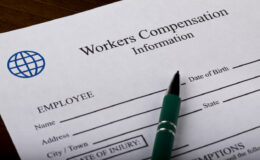By Donna Motley, Vice President of Claims
At this time of year, particularly this year, we seem to talk and complain about the weather. The winter season 2018 – 2019 has been confusing, if nothing else. We’ve had snow, ice, sleet/freezing rain, temperatures that range from sub-zero to almost spring. As a result of our yo-yo weather, a lot of people have gotten sick and a lot of people have sustained an injury. Our department is receiving a lot of claims for “slip and fall on ice and snow” resulting in broken bones, sore muscles and head injuries that are being defined as a “concussion”. A concussion is considered to be a “traumatic brain injury” – a mild traumatic brain injury – the least serious type of brain injury. A concussion is defined as a short loss of normal brain function.
The National Football League and other sports have brought awareness to concussions and treatment of same. Concussions are generally sustained in sports and recreational activities, car and/or bicycle accidents, work injuries, falls and (physical) fighting. Concussions are usually caused by a sudden direct blow or bump to the head which “jolts” the brain. Also included, a “whiplash” motion. This in turn can result in brain bruising, damage to blood vessels (or a bleed) and/or injury to nerves.
There are three grades of concussions depending on symptoms, loss of consciousness and length of loss of consciousness. Loss of consciousness greater than 6 hours is considered severe. There may be no visible sign on the outside of the head. Typical symptoms can include confusion, clumsiness, slurred speech, nausea or vomiting, headache (most common), dizziness, blurred vision, sensitivity to light and/or noise, ringing in ears, behavior or personality changes, concentration difficulties, memory loss, slowed reaction to stimuli, irritability. Symptoms are not always immediately apparent. An injured person may “think” they lost consciousness but maybe they simply “don’t remember” the incident. You can sustain a concussion without loss of consciousness.
With a work injury, we suggest the employee seek immediate medical treatment. Based on symptoms, initial medical testing and length of symptoms, a CT Scan or MRI may be performed. Initial treatment is usually in the form of prescription medication, rest and no stress. NO ASPIRIN! Research indicates 80-90% of concussions resolve in 7-10 days.
However, recovery may be influenced by age (at the time of injury), intellectual abilities, family environment, social support system, occupational status, coping strategies, financial circumstances, overall poor health, clinical depression, substance abuse, additional injuries sustained at the same time and “life stress”. In other words, the same influencers for any other injury.
If symptoms continue for an excessive length of time, particularly showing no improvement, or worsening, neuropsychological testing can be performed. This testing will determine cognitive impairments with built in testing to determine malingering and exaggeration of symptoms and show the health of the brain. Testing can range from 3 to 8 hours in duration.
You can see how easy it would be to sustain a concussion – a slip and fall on the ice and hitting your head in the process. You don’t need ALL of the above listed symptoms to be diagnosed. The symptoms can be subjective in nature – you cannot disprove a person is having a headache or feels nauseous. And what about irritability? We are all a little bit irritable at this time of the year! So it is best, with ANY head injury to have the employee seen by a medical professional to have a baseline diagnosis. A true head injury probably should not be operating machinery or driving a vehicle. Early treatment is most effective in the recovery process.
Our department can direct proper medical treatment, but we need the Employers Basic Report of Injury to start the process. Every injury report indicating a head injury is given immediate attention.






